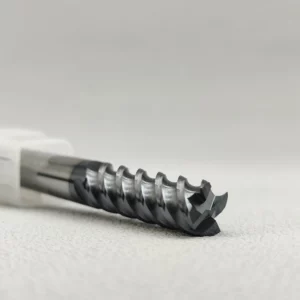End mills play a crucial role in the machining process, especially when it comes to materials like copper. Choosing the right end mill for copper machining can significantly impact the efficiency, quality, and overall success of the process. In this article, we will explore the key considerations that should be taken into account when selecting an end mill for copper.
First and foremost, it’s essential to understand the properties of copper and how they affect the machining process. Copper is a soft and ductile metal, which means it can easily deform and create built-up edge during cutting. Therefore, the end mill for copper needs to be able to handle these characteristics effectively.
The material of the end mill is one of the most critical factors to consider. Carbide end mills are commonly used for machining copper due to their excellent hardness and wear resistance. Carbide end mills can withstand the high temperatures generated during cutting and maintain sharp cutting edges for longer periods, resulting in better performance and surface finish.
Another important consideration is the geometry of the end mill. The flute design, helix angle, and edge geometry all play a role in determining how well the end mill performs in copper machining. For example, end mills with higher flute counts and variable helix angles are better suited for efficient chip evacuation and reducing the risk of built-up edge formation.
The coating of the end mill also influences its performance when machining copper. While uncoated end mills can work well for copper machining, coatings such as TiN (Titanium Nitride) or TiCN (Titanium Carbonitride) can provide additional benefits. These coatings improve lubricity, reduce friction and heat generation, and enhance tool life, making them particularly useful when machining copper.
When selecting an end mill for copper, it’s crucial to consider the specific requirements of the application. Factors such as cutting depth, feed rate, and spindle speed should be taken into account to ensure optimal performance and tool life. Moreover, the type of machine tool and cutting conditions should also be considered when choosing the right end mill for copper machining.
In addition to the technical aspects, cost and availability are also important factors to consider. While high-performance end mills with advanced coatings may offer superior performance, they may come at a higher cost. It’s essential to strike a balance between performance and cost-effectiveness based on the requirements of the application.
Furthermore, it’s crucial to consider the environmental and safety implications of the end mill for copper machining. Using coolant or lubricant during cutting can help dissipate heat and improve chip evacuation, but it’s essential to ensure that the coolant is compatible with copper and safe for the operator and the environment.
In conclusion, selecting the right end mill for copper machining requires careful consideration of various factors, including material, geometry, coating, application requirements, cost, and safety. By understanding these key considerations and choosing the appropriate end mill, manufacturers can achieve optimal results in copper machining, leading to improved efficiency, quality, and profitability.
